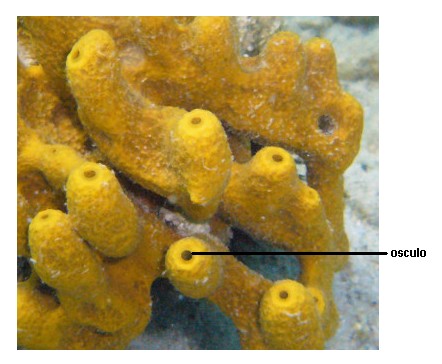|
Haliclona Submonilifera
''Haliclona submonilifera'', or the bubble bead sponge, is a deep-water demosponge from the continental shelf and slope off south-west Africa.Atkinson, LJ; Sink, KJ (2018). Field Guide to the Offshore Marine Invertebrates of South Africa'. Pretoria: Malachite Marketing and Media. Description This straw yellow sponge grows upright, with stalked branches that have numerous swellings and constrictions. These branches end with rounded ends with distinct oscules. Oscules may also occur on rounded elevations along the branches. The surface has a velventy texture. This sponge is very flexible and compressible and is easily torn. It typically grows up to tall and . It looks incredibly similar to ''Haliclona (Haliclona) urizae'', another Namibian Namibia (, ), officially the Republic of Namibia, is a country in Southern Africa. Its western border is the Atlantic Ocean. It shares land borders with Zambia and Angola to the north, Botswana to the east and South Africa to the south ... [...More Info...] [...Related Items...] OR: [Wikipedia] [Google] [Baidu] |
Demosponge
Demosponges (Demospongiae) are the most diverse class in the phylum Porifera. They include 76.2% of all species of sponges with nearly 8,800 species worldwide (World Porifera Database). They are sponges with a soft body that covers a hard, often massive skeleton made of calcium carbonate, either aragonite or calcite. They are predominantly leuconoid in structure. Their "skeletons" are made of spicules consisting of fibers of the protein spongin, the mineral silica, or both. Where spicules of silica are present, they have a different shape from those in the otherwise similar glass sponges. Some species, in particular from the Antarctic, obtain the silica for spicule building from the ingestion of siliceous diatoms. The many diverse orders in this class include all of the large sponges. Most are marine dwellers, but one order ( Spongillida) live in freshwater environments. Some species are brightly colored, with great variety in body shape; the largest species are ove ... [...More Info...] [...Related Items...] OR: [Wikipedia] [Google] [Baidu] |
Osculum
The osculum (plural "oscula") is an excretory structure in the living sponge, a large opening to the outside through which the current of water exits after passing through the spongocoel. Wastes diffuse into the water and the water is pumped through the osculum carrying away with it the sponge's wastes. Sponges pump large volumes of water: typically a volume of water equal to the sponge's body size is pumped every five seconds. The size of the osculum is regulated by contractile myocytes. Its size, in turn, is one of the factors which determines the amount of water flowing through the sponge Sponges, the members of the phylum Porifera (; meaning 'pore bearer'), are a basal animal clade as a sister of the diploblasts. They are multicellular organisms that have bodies full of pores and channels allowing water to circulate through t .... It can be closed completely in response to excess silt in the water. References Sponge anatomy {{animal-anatomy-stub ... [...More Info...] [...Related Items...] OR: [Wikipedia] [Google] [Baidu] |
Namibia
Namibia (, ), officially the Republic of Namibia, is a country in Southern Africa. Its western border is the Atlantic Ocean. It shares land borders with Zambia and Angola to the north, Botswana to the east and South Africa to the south and east. Although Kazungula, it does not border Zimbabwe, less than 200 metres (660 feet) of the Botswanan right bank of the Zambezi, Zambezi River separates the two countries. Namibia gained independence from South Africa on 21 March 1990, following the Namibian War of Independence. Its capital and largest city is Windhoek. Namibia is a member state of the United Nations (UN), the Southern African Development Community (SADC), the African Union (AU) and the Commonwealth of Nations. The driest country in sub-Saharan Africa, Namibia has been inhabited since pre-historic times by the San people, San, Damara people, Damara and Nama people. Around the 14th century, immigration, immigrating Bantu peoples arrived as part of the Bantu expansion. Since ... [...More Info...] [...Related Items...] OR: [Wikipedia] [Google] [Baidu] |
Sponge Spicule
Spicules are structural elements found in most sponges. The meshing of many spicules serves as the sponge's skeleton and thus it provides structural support and potentially defense against predators. Sponge spicules are made of calcium carbonate or silica. Large spicules visible to the naked eye are referred to as megascleres, while smaller, microscopic ones are termed microscleres. The composition, size, and shape of spicules are major characters in sponge systematics and taxonomy. Overview Sponges are a species-rich clade of the earliest-diverging (most basal) animals. They are distributed globally, with diverse ecologies and functions, and a record spanning at least the entire Phanerozoic. Most sponges produce skeletons formed by spicules, structural elements that develop in a wide variety of sizes and three dimensional shapes. Among the four sub-clades of Porifera, three (Demospongiae, Hexactinellida, and Homoscleromorpha) produce skeletons of amorphous silica and on ... [...More Info...] [...Related Items...] OR: [Wikipedia] [Google] [Baidu] |
Haliclona
''Haliclona'' is a genus of demosponges in the family Family (from la, familia) is a group of people related either by consanguinity (by recognized birth) or affinity (by marriage or other relationship). The purpose of the family is to maintain the well-being of its members and of society. Idea ... Chalinidae. Species The following species are recognised in the genus ''Haliclona'': ;Subgenus Haliclona (Flagellia) Van Soest, 2017 * '' Haliclona (Flagellia) amirantensis'' Van Soest, 2017 * '' Haliclona (Flagellia) anataria'' (Lévi & Lévi, 1983) * '' Haliclona (Flagellia) edaphus'' De Laubenfels, 1930 * '' Haliclona (Flagellia) flagellifera'' (Ridley & Dendy, 1886) * '' Haliclona (Flagellia) hajdui'' Van Soest, 2017 * '' Haliclona (Flagellia) hamata'' (Thiele, 1903) * '' Haliclona (Flagellia) hentscheli'' Van Soest, 2017 * '' Haliclona (Flagellia) hiberniae'' Van Soest, 2017 * '' Haliclona (Flagellia) indonesiae'' Van Soest, 2017 * '' Haliclona (Flagellia) porosa'' (Fri ... [...More Info...] [...Related Items...] OR: [Wikipedia] [Google] [Baidu] |



